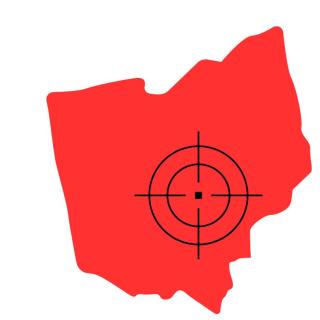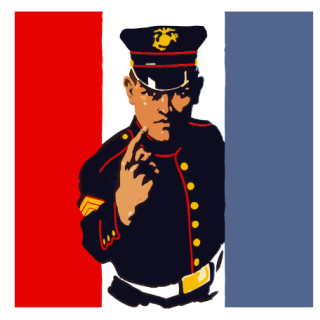In 1946 the Supreme Court ruled in Morgan v. Virginia that segregated travel on interstate buses was unconstitutional, thus sending the separate-but-equal doctrine in Plessy v. Ferguson (1896) teetering.
In spite of the ruling, the states of the Old Confederacy refused to comply. In 1955 the Interstate Commerce Commission (ICC) ruled in Sarah Keys v. Carolina Coach Company formerly overturned the practice, but did nothing to enforce the decision. Finally, in Boynton v Virginia (1960) the Supreme Court outlawed segregated waiting rooms and restaurants in terminals that served buses that crossed state lines. Taken together, these three rulings clearly overturned the Plessy case. Some places in the upper south complied with the rulings, but for the most part the south thumbed its noses at the Supreme Court as it had been doing since 1887, the end of Reconstruction.
An interracial group of men and women, who came to be known as the Freedom Riders, challenged that lawlessness with a campaign that sent teams of activists on buses throughout the south to highlight the intransigence of the region and force compliance with the ruling.
Charles Person is one of two survivors of the original thirteen people who boarded the Continental Trailways bus on the fourth of May in 1961. Born in deeply segregated Atlanta, Georgia, in 1942, he grew up in a black area known as Buttermilk Bottom, surrounded by a loving, multi-generational. The family was poor, but they had plenty of food. Person’s father was an orderly at Emory University Hospital. His mother performed day work and read the Bible to her children before bedtime. Person thrived in this all-black world, cosseted by the love of his family.
It wasn’t until he got his first job as a pin boy in the bowling alley at the age of twelve that he became acquainted with Jim Crow. There whites referred to him as boy. He discovered that the older boys didn’t like that, but were afraid to speak up for fear of losing their jobs. He found out that his mother couldn’t use the same dinner service as the white families for whom she toiled even as she helped rear their children and they claimed to be fond of her. In civics class, he was stunned to see a picture of the street on which he lived in a chapter on urban blight. Finally, he found out that as bright as he was and as high as his grades were, he would never be accepted into Georgia Institute of Technology.
The segregation at Georgia Tech turned out to have a silver lining. While he was accepted into the Massachusetts Institute of Technology, his family could not afford to send him there. After som research, Person chose Morehouse College, a historically black, elite men’s school and alma mater of Martin Luther King, Jr., located in Atlanta. He could walk the three miles twice a day and live at home, thus saving even more money. Within a month after his application to Morehouse, four Black male students from North Carolina Agricultural and Technical State University sat down at the lunch counter of a Woolworth’s store in Greensboro, North Carolina, and asked to be served, kicking off a firestorm in the south. Person joined the students agitating for change. He began participating in the lunch counter sit-ins and was arrested and jailed for his trouble. At one point he was moved to solitary confinement, probably for singing freedom songs too loudly. The experience didn’t break his spirit though; it thrilled him to the depths of his soul.
Back on campus, he saw a notice on the bulletin board in Rush Memorial Congregational Church inviting students to apply to participate in something called a Freedom Ride that was sponsored by the Congress of Racial Equality (CORE). The rides aimed to test the enforcement of the ICC’s ruling against segregated buses in interstate travel and the recent Supreme Court decisions. Downplaying the potential danger of the exercise to his father, Person applied and was accepted. He worked with a number of committed activists, some of whom today are revered household names: James Farmer, John Lewis–whom Person found intimidating and hard to get to know–Lonnie King, Walter and Frances Bergman, Jim Peck, Julian Bond, and Roslyn Pope.
The Freedom Riders trained intensely in non-violent techniques, including being screamed at, pulled off stools, punched, kicked, and called names, including nigger. They were taught how to best protect themselves in case violence visited them–roll up in a ball and cover tender areas of their bodies–and interrogated as to why they wanted to participate in such an endeavor.
On May 4, 1961, the interracial group of thirteen people left Washington, D. C. on a Greyhound bus. The first few days of the ride were mostly uneventful as the bus traveled through Virginia, North Carolina, and Georgia. Some bus depots had taken down the dreaded segregation signs, but still maintained segregation, others had not. Eight days later they encountered trouble at the Greyhound terminal in Rock Hill, South Carolina, when several riders were savagely attacked for trying to use the restroom marked for whites only. Before getting back on the road, they arrayed themselves into two groups; one left on the Greyhound bus and the other moved out on a Continental Trailways bus. They knew that their worst test would be in Alabama.
When the Greyhound bus approached the Anniston, Alabama, bus station on May 14, the driver saw a mob of more than one hundred fifty people armed with blackjacks, tire chains, and iron bars. He kept going and the mob followed in their cars. About five miles outside of Anniston, the tires on the bus all went flat. The mob broke the windows of the bus and tossed in a firebomb. The passengers on the bus barely made it out alive. The Trailways bus was also attacked and some of the riders were violently beaten. Person was stripped of his suit jacket and held upright with his arms pinned back while several white toughs punched, kicked, and slapped him repeatedly. When they saw the flash of a camera, they let go of him, and went after the photographer. Person managed to make it out of the terminal and onto a city bus, bleeding, woozy. and disheveled. The driver took him to a set of railroad tracks that led to the Black side of town where he found a pay phone and called for help. It wasn’t until later that night Person realized he had lost his jacket. Inside the pocket was the precious notebook–priceless to him–in which he recorded his daily journeys.
In the last chapter, Person writes eloquently about the price of the ticket–that is, what he and others in the movement lost as a result of participating. Those losses are painful and sad for so many: deaths and bereavement, lost homes and relationships, interrupted educational opportunities, physical hardships from the violence, emotional scars. I wonder how many of them think the cost was too high.
Buses Are a Comin’ is story telling at its best, and reads like a fast-paced thriller. Person and Rooker transported me back to my childhood with descriptions of his mother’s mouth-watering cooking, playing with his siblings and cousin, and his visits to extended kin. The reader will feel the pride Person experienced as he committed himself to the Freedom Movement, finding purpose and camaraderie in something so much larger than himself. More than sixty years later, his youthful exuberance is still apparent.
Even though I have studied and taught about the modern-day Freedom Movement for three decades, each new book I read has something I’ve yet to discover and increases my awe, respect, and gratitude for the extraordinary, ordinary people who gave so much to force America to live up to the promises she has historically made to her citizens. And even though I know it’s futile, I will spend the rest of my days hoping that one of those racist brutes who beat Charles Person has a come to Jesus and somehow sees to it that he gets his jacket and notebook back.



